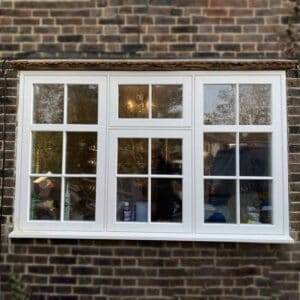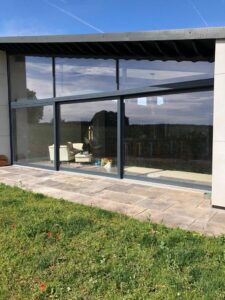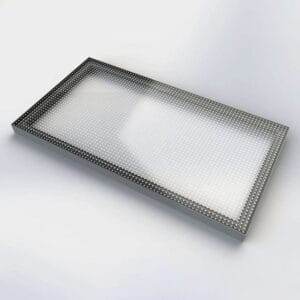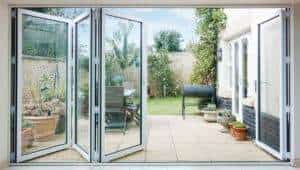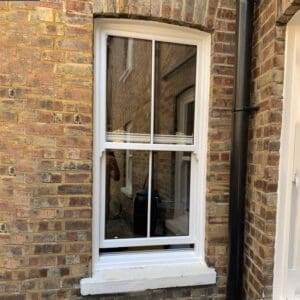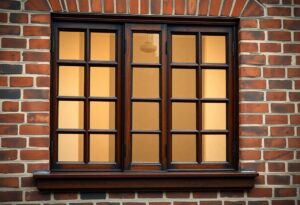Innovations in facade technology are redefining the very essence of architectural design, inviting you to glimpse a future where buildings breathe and react to their environment. As smart systems evolve, they promise not just aesthetic appeal but also enhanced energy efficiency and sustainability. Imagine your surroundings dynamically responding to light, weather, and even human activity, crafting a symbiotic relationship between structure and site. Join us on a journey into this brave new world where innovation meets artistry, creating buildings that are not only visually stunning but also intelligent and responsive to your needs.

The Evolution of Facades
Before delving into the advanced marvels of today’s facade technologies, it is vital to appreciate the dramatic evolution that these structures have undergone over time. The transformation from simple, static elements to intricate, dynamic systems has redefined not only aesthetics but also functionality and sustainability in architecture.
From Static to Dynamic
For centuries, facades were mere static barriers separating the interior from the exterior, offering little more than protection from the elements. You must now recognise the shift that has occurred, as contemporary designs embrace dynamic systems capable of adapting to changing environmental conditions, enhancing both performance and user experience.
The Rise of Smart Materials
Dynamic innovations have paved the way for the emergence of smart materials, which are revolutionising facade design. Traditional building materials have been enhanced with technologies enabling responsive behaviours to environmental stimuli, fundamentally altering how these structures interact with their surroundings.
With the advent of smart materials, facades can not only insulate but also self-regulate temperature, control light, and even generate energy. Imagine a skin that tailors itself to the day’s light, reducing your reliance on artificial sources and improving your comfort. These materials can respond to thermal, luminous, and mechanical changes, ensuring energy efficiency while elevating aesthetics. Your perception of a building can completely transform, as design becomes a dance between nature and technology, ushering in an era of integrated and sustainable architecture.
Smart Systems Innovations
Energy Harvesting and Storage
For the future of facades, energy harvesting and storage represent a remarkable shift towards sustainability. By integrating photovoltaic cells and innovative materials, your building can harness solar energy, converting it into usable power. This energy can be stored efficiently, providing your structure with a continuous supply and reducing your reliance on traditional energy sources.
Climate Responsive Design
The essence of climate responsive design lies in its ability to adapt to the environmental conditions around you. By employing smart sensors, your facade can adjust its characteristics, such as shading and ventilation, in real-time. This not only optimises indoor comfort but also significantly lowers energy consumption, aligning your building with the principles of sustainability.
Plus, by embracing climate responsive design, you can create spaces that are inherently harmonious with their surroundings. Imagine a facade that communicates with the environment, responding to shifts in temperature or sunlight to enhance natural light while minimising heat gain. This synergy between architecture and nature not only elevates your design aesthetically but also contributes to a healthier, more resilient building that anticipates and meets the climatic challenges of tomorrow.
Integration and Interoperability
Little do we realise that the future of facades lies not just in their aesthetics but in their seamless integration with smart systems. As the built environment becomes increasingly complex, the ability for these systems to communicate and operate cohesively will define the efficiency and sustainability of our spaces.
Building Management Systems (BMS)
For your buildings to thrive in this new paradigm, Building Management Systems (BMS) are crucial. They act as the central nervous system, integrating various technologies to manage energy use, regulate indoor climates, and optimise occupancy comfort. Enhanced BMS can significantly reduce operational costs and improve energy efficiency, paving the way for greener architectural designs.
Internet of Things (IoT) Connectivity
Connectivity is at the heart of transformative architectural advancements. Implementing IoT connectivity allows facades to interact, collect data and respond intelligently to environmental changes. This not only enhances user experience but also facilitates informed decision-making regarding maintenance and energy consumption.
Systems that leverage IoT connectivity enable your buildings to gather real-time data, making sense of factors like temperature, humidity, and occupancy levels. By harnessing this stream of information, you create dynamic spaces that adapt seamlessly to their surroundings. Imagine facades that adjust their thermal performance automatically, ensuring optimal energy use while maintaining comfort. The opportunities presented by IoT connectivity are boundless, setting the stage for smarter, more sustainable architectural designs that resonate with your vision of the future.
Conclusion
Now, as you contemplate the burgeoning innovations in smart systems for facades, envision a future where your buildings are not merely structures but responsive living entities. By integrating advanced technologies, these facades will enhance energy efficiency, redefine aesthetics, and adapt seamlessly to environmental changes. You stand at the forefront of this architectural revolution, embracing the potential to create spaces that are not only functional but also profoundly connected to their surroundings. The future of facades is bright, and it invites you to imagine a world where design and technology harmoniously coalesce.
FAQ
Q: What are smart facade systems and how do they impact building design?
A: Smart facade systems integrate advanced technologies into the building envelope, enhancing both aesthetics and functionality. These systems often include sensors, automated shading devices, and responsive materials that adapt to environmental conditions. By doing so, they contribute to energy efficiency, improved indoor comfort, and reduced operational costs. Additionally, smart facades can help manage natural light, minimise heat gain, and enhance the overall sustainability of a building, making them an important component of modern architectural design.
Q: How do smart systems in facades contribute to energy efficiency?
A: Smart systems in facades significantly contribute to energy efficiency through various mechanisms. By utilising sensors and automation, these facades can optimise ventilation, air conditioning, and lighting based on real-time occupancy and weather conditions. For instance, automated shading adjustments can reduce solar heat gain, lowering the demand for air conditioning during warmer months. Furthermore, the integration of renewable energy technologies, such as photovoltaic panels within the facade, can also help buildings generate their own energy, resulting in a reduced carbon footprint and lower energy costs over time.
Q: What are the challenges of implementing smart facade systems in new and existing buildings?
A: Implementing smart facade systems presents several challenges, particularly in terms of integration and cost. For new constructions, ensuring that the design accommodates the necessary technology while still meeting aesthetic and structural requirements can be complex. In existing buildings, retrofitting smart systems may require significant modifications, potentially disrupting the current functionality and increasing costs. Additionally, the reliance on technology may pose challenges in terms of maintenance and the need for skilled personnel to manage these systems effectively. Despite these obstacles, the long-term benefits of energy savings and enhanced building performance often outweigh the initial difficulties.

